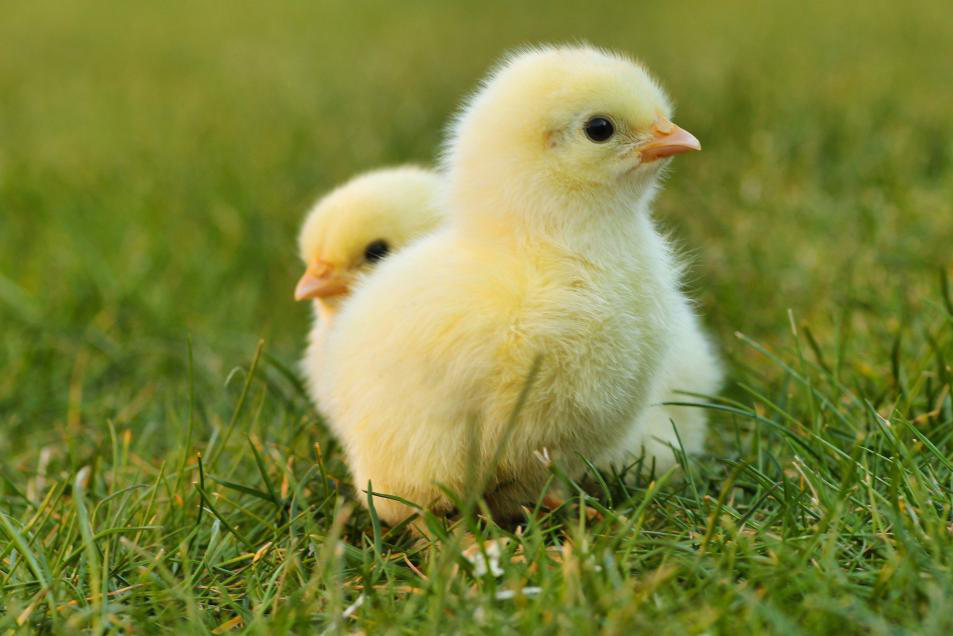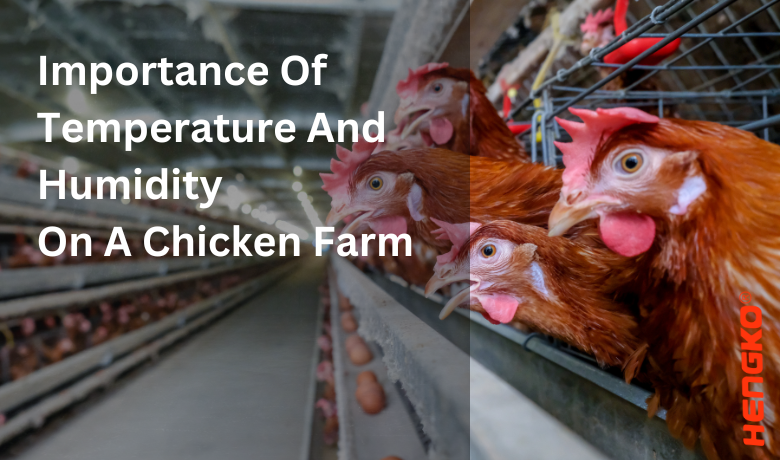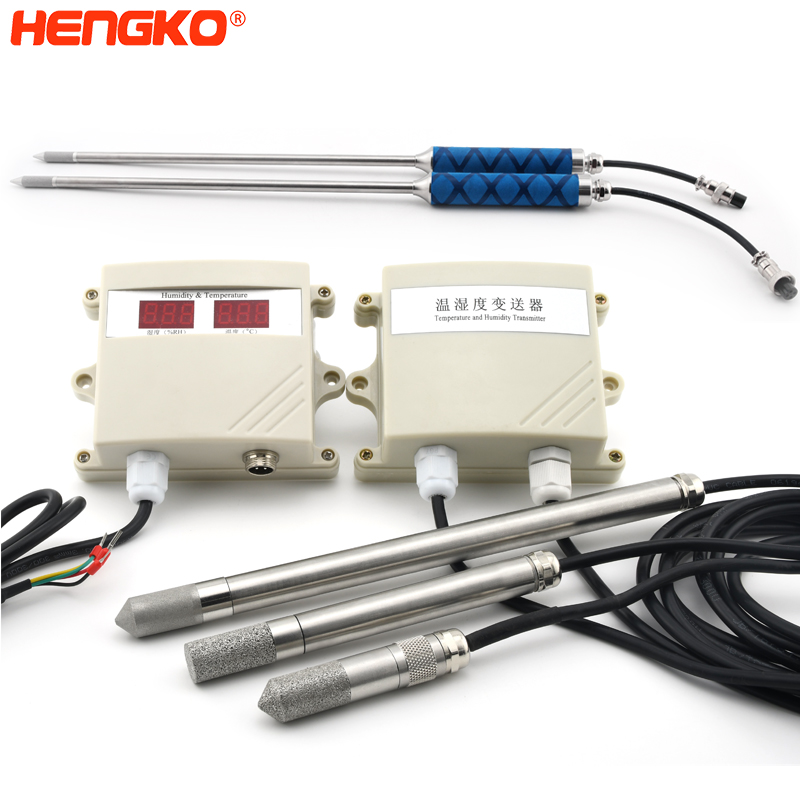The importance of temperature and humidity on a chicken farm
The Importance of Temperature and Humidity on a Chicken Farm
Introduction
Maintaining optimal conditions is essential for the well-being and productivity of chickens on a farm. Temperature and humidity play a crucial role in creating a conducive environment for their growth and health. In this blog post, we will explore the significance of temperature and humidity on a chicken farm and provide valuable insights into their management.
The Impact of Temperature on Chickens
Chickens are highly sensitive to temperature variations, and maintaining the ideal temperature range is paramount for their welfare. High temperatures can lead to heat stress, causing decreased feed intake, reduced egg production, and even mortality. On the other hand, cold temperatures can result in cold stress, affecting growth rates and increasing susceptibility to diseases.
To manage temperature effectively, proper ventilation and air circulation are vital. Farm owners should ensure adequate airflow throughout the facility, allowing hot air to escape during warmer months and preventing drafts during colder periods. Additionally, insulation and heating techniques can help maintain a consistent and comfortable temperature for the chickens. Consider using shade or cooling systems to provide relief during hot weather.
The Role of Humidity in Chicken Farming
Humidity levels also significantly impact chicken health and productivity. Excessive moisture in the environment can lead to wet litter, promoting the growth of harmful bacteria and fungi. Poor air quality resulting from high humidity can cause respiratory issues, negatively affecting the overall well-being of the birds. Conversely, low humidity levels can lead to dry air, potentially leading to respiratory discomfort.
To control humidity, effective ventilation and airflow management are crucial. This helps remove excess moisture from the environment and maintain optimal humidity levels. Proper litter management is also essential to prevent moisture buildup. Consider implementing humidification or dehumidification methods, depending on the specific needs of your chicken farm.
The Relationship Between Temperature, Humidity, and Chicken Health
Temperature and humidity are closely interconnected, and their balance is crucial for chicken health. Deviations from optimal conditions can result in various health issues and decreased productivity. It's important to understand that temperature and humidity work hand in hand to create a suitable environment for chickens.
Regular monitoring and data collection are necessary to ensure that temperature and humidity levels are within the desired range. Implementing advanced technology and automation can streamline this process, providing real-time information and allowing for prompt adjustments when needed. By maintaining a balance between temperature and humidity, you can ensure the well-being and performance of your flock.
Best Practices for Temperature and Humidity Management
To effectively manage temperature and humidity on your chicken farm, consider the following best practices:
1. Regular monitoring: Install reliable sensors and regularly measure temperature and humidity levels. Keep a record of the data to identify patterns and trends.
2. Technology and automation: Embrace technology by using automated systems that monitor and control temperature and humidity. This can provide accurate and timely adjustments, optimizing the conditions for the chickens.
3. Equipment maintenance: Regularly inspect and maintain ventilation systems, fans, and heaters to ensure their proper functioning. Replace faulty equipment promptly to avoid any disruptions in the environment.
4. Training and education: Educate farm personnel on the importance of temperature and humidity management. Train them to recognize signs of stress or discomfort in the chickens and empower them to take appropriate actions.
5. Emergency preparedness: Develop contingency plans for extreme weather conditions. Be prepared with backup systems and alternative heating or cooling methods to ensure the safety and well-being of your chickens.
Winter is coming, the north and south have entered the cold season, not only people fell cold, chicken will be “cold”. Temperature is one of important factors that can improve the survival rate and hatching rate of chicken chick in chicken farm, we all know that only in the right environment temperature can the eggs grow up and eventually hatch into chickens. And in the process of raising young chicks, the temperature is too low, the chicks are easy to catch cold and cause diarrhea or respiratory diseases, and the chicks will gather together in order to keep warm, affecting feeding and activities. Therefore, the chicken farm must pay attention to the control of temperature.
Temperature monitoring and Control in Chicken Coop:
The temperature at the first to second day of age was 35℃ to 34℃ in the incubator and 25℃ to 24℃ in the chicken farm.
The temperature of incubators from 3 to 7 days of age was 34℃ to 31℃, and that of chicken farms was 24℃ to 22℃.
In the second week, the incubator temperature was 31℃~29℃, and the chicken farm temperature was 22℃~21℃.
In the third week, the incubator temperature was 29℃~27℃, and the chicken farm temperature was 21℃~19℃.
In the fourth week, the temperature of the incubator was 27℃~25℃, and that of the chicken farm was 19℃~18℃.
Chick growth temperature should be kept stable, can not fluctuate between high and low, will affect the growth of chickens.

What Should You Care ?
The humidity in the chicken coop mainly comes from the water vapor generated by the respiration of the chicks, the influence of the air humidity on the chicks is combined with the temperature. At the right temperature, high humidity has little effect on the thermal regulation of the chicken body.
However when the temperature is relatively high, the chicken body mainly relies on evaporative heat dissipation, and the high humidity of the air prevents the evaporative heat dissipation of the chicken, and the body heat is easy to accumulate in the body, and even makes the body temperature rise, affecting the growth and egg production effeciency of the chicken.
It is generally believed that 40%-72% is the appropriate humidity for chicken. The upper limit temperature of laying hens decreased with the increase of humidity. The reference data are as follows: temperature 28℃, RH 75% temperature 31℃, RH 50% temperature 33℃, RH 30%.
What HENGKO Can Do For You ?
We can use temperature and humidity sensor to detect the temperature and humidity data in the chicken coop, when the temperature and humidity is too high or too low, it is convenient for us to take timely measures, such as opening the exhaust fan for ventilation and cooling or taking timely measures to keep warm. HENGKO® temperature and humidity transmitter series products are specially designed for temperature and humidity monitoring in harsh environments.
What Other Application of Temperature and Humidity Sensor ?
Typical applications include stable indoor environment, heating, ventilation air- conditioning (HVAC), livestock farm, greenhouse, indoor swimming pools, and outdoor applications. Sensor probe housing, good air permeability, fast flow of gas and humidity, fast exchange speed. The housing prevents water from seeping into the body of the sensor and damaging the sensor, but allows air to pass through for the purpose for the measuring ambient humidity(humidity). Pore size range:0.2um-120um, filter dustproof, good interception effect, high filtration efficiency. Pore size, flow rate can be customized according to needs; stable structure, compact particle bonding, no migration, almost inseparable under harsh environment.


